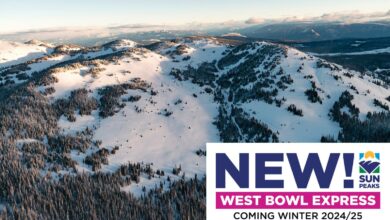Fulfill Your “Yellowstone” Fan Dreams in Western Montana
DESTINATION
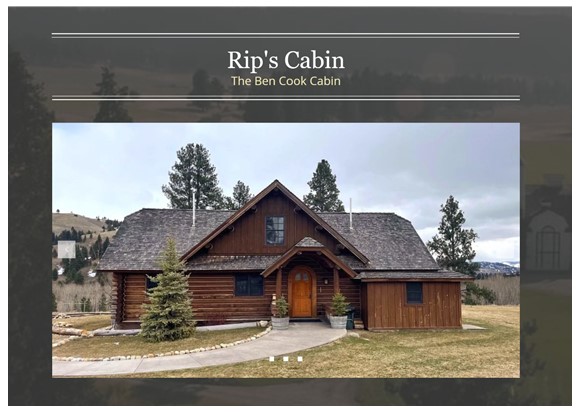
Fans of the Paramount TV series “Yellowstone,” starring Kevin Costner, Cole Hauser, Kelly Reilly, Luke Grimes and Wes Bentley, have been showing up in Western Montana trying to get a glimpse of the life of John Dutton and his – shall we say, complicated – family and their Yellowstone Ranch.
Before season four began filming, the entire production was relocated to Western Montana, where Dutton’s ranch resides – also known to the locals as Chief Joseph Ranch. Different locations and various businesses have been utilized for filming around Missoula and the Bitterroot Valley south of Missoula.
For those fans who have asked for locations to visit on their next trip to Western Montana, we’ve got you covered. Please be respectful of those who live and work at these establishments as you are fulfilling your Yellowstone fan dreams through the region. See the self-drive itinerary including the “Train Station” here. And for those who really want to take your Yellowstone fandom to the next level, overnight stays are allowed at Chief Joseph Ranch when they are not filming the show.
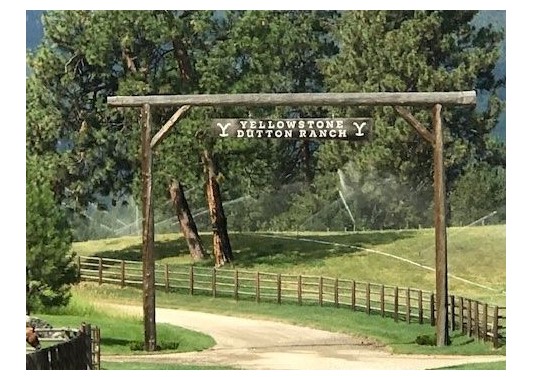
[Photo: Yellowstone Ranch CREDIT Glacier Country Tourism.jpg]
For more information on Western Montana’s Glacier Country, visit GlacierMT.com.
Theodore Roosevelt And The Badlands Boat Thieves
Some stories are too good for the big screen. They’re for the history books.
One icy morning, a ranch hand ran to the Billings County Sheriff claiming a boat had been stolen, a severed rope and a red mitten as proof. The idea of pursuing armed and dangerous thieves on a flooded and ice-filled river was a life-threatening task. However, this sheriff lived for rugged adventures. His name was Theodore Roosevelt.
In the 1888 book “Ranch Life and the Hunting Trail,” he recounts the tale of battling the Missouri River through rolling clay buttes and zero-degree weather. When they approached the camp, Roosevelt wrote, “For a moment, we felt a thrill of keen excitement and our veins tingled as we crept cautiously toward the fire.” Using the element of surprise, all three thieves were apprehended. The trip took 36 hours and 300 miles – all for a replaceable boat – and was only made possible with Roosevelt’s undying sense of justice and need for adventure.
Stories like these tested his resolve, and are part of the reason he said, “I would not have been president if it had not been for my experience in North Dakota.” Today, you can visit the area where this happened at the Elkhorn Ranch in Theodore Roosevelt National Park.
For more information on North Dakota, visit NDTourism.com.
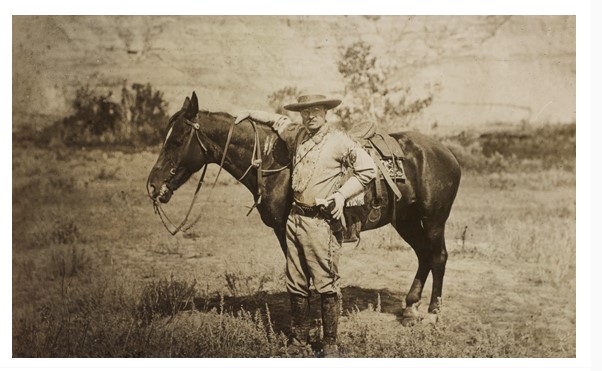
[Photo: Theodore Roosevelt CREDIT Library of Congress.jpg]
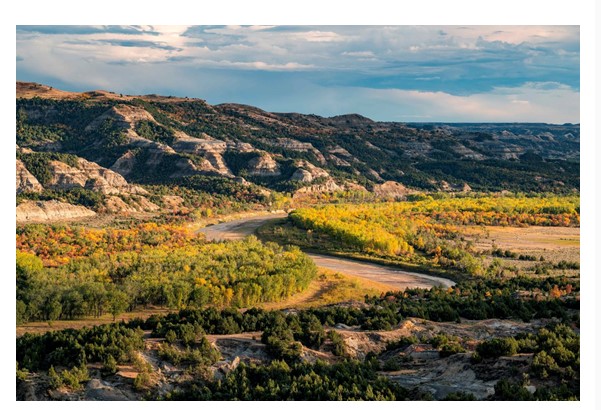
[Photo: Theodore Roosevelt National Park CREDIT North
You Can Visit the Infamous Woodchipper in Fargo
Fargo was absolutely put on the map by the 1996 namesake film “Fargo,” written and directed by the Coen Brothers. The dark comedy movie depicted a frozen tundra with a hilariously unprepared police department trying to solve a crime.
The “Fargo” woodchipper scene goes down as one of the most infamous murder scenes in cult classic cinema history. Although the film wasn’t actually shot in Fargo (you’ll notice it looks nothing like the movie), you can still visit this original movie prop (and its stunt double) at the Fargo-Moorhead Visitors Center.
For more information on Fargo-Moorhead, visit www.VisitFargoMoorhead.org.
SOUTH DAKOTA
Get To Know Hugh Glass, South Dakota’s “Revenant”
An epic tale of survival and revenge, the early 2016 film “The Revenant” tells the story of frontiersman Hugh Glass (played by Leonardo DiCaprio). Glass was a trapper in South Dakota, where he was mauled by a grizzly bear and left for dead by his companions. Fueled by revenge and the will to survive, he crawled for six weeks to the nearest settlement, Fort Kiowa, near present-day Chamberlain.
Today, you can follow the route Glass took through the South Dakota wilderness and be amazed just how he lived to tell the tale.
Start your journey in the northern South Dakota town of Lemmon. You can almost hear the roar while looking at renowned artist John Lopez’s sculpture in the Grand River Museum. Lopez used scrap metal to recreate the battle between Hugh Glass and a grizzly bear. Want to know more? Just head to Lopez’s studio in downtown Lemmon. Not only can you see more of Lopez’s work, you’re also likely to catch the sculptor himself at work.
For other famous South Dakota Films such as “Into the Wild,” “National Treasure: Book of Secrets,” “Dances With Wolves,” “Armageddon” and “Hidalgo,” visit https://www.travelsouthdakota.com/shows-films-shot-south-dakota.
For more information on South Dakota, visit TravelSouthDakota.com.
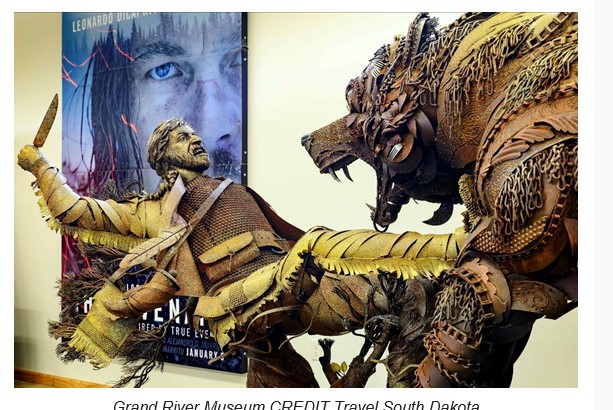
[Photo: Grand River Museum 2 CREDIT Travel South Dakota.jpg]
Take a Tour of “Dances With Wolves” Set in Rapid City
Discover the great Western town experience of Fort Hays Town Square in Rapid City, South Dakota, made famous by a free tour of an iconic film set. “Dances with Wolves” is an American epic Western film first released in 1990 starring recognizable names like Kevin Costner and Graham Greene. Visitors to Fort Hays can see the original buildings used in the movie inside the South Dakota Movie Museum, which includes remnants of more than 50 other movies filmed in South Dakota.
This self-guided tour includes visiting artisans creating handmade tools, ropes, bricks, tin plates and knives, and even panning for Black Hills Gold at the Gem Shop. Be sure to explore it all, including the view you can find overlooking Black Hills National Forest and all the photo-worthy moments in between.
Fort Hays is also home to Mount Rushmore Tour Company, featuring sightseeing packages to top attractions in the Black Hills like Mount Rushmore, Crazy Horse Memorial, Custer State Park and Needles Highway. The Fort Hays season runs mid-May through the beginning of October. Whether you’re a fan of the Old West, scenic tours or even just Kevin Costner himself, there’s lots to love about a visit to Fort Hays.
For more information on Rapid City, visit VisitRapidCity.com.
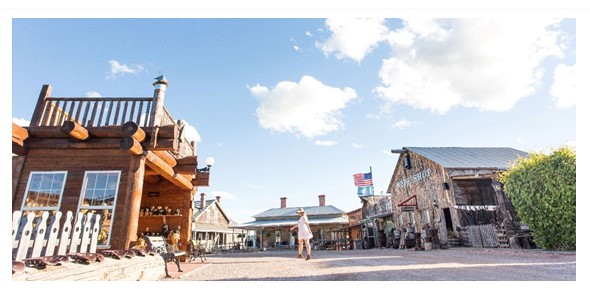
[Photo: Fort Hays Chuckwagon 2 CREDIT Visit Rapid City.jpg]
WYOMING: Visitors Come From All Over For The Otherworldly Pull of Devils Tower
Wyoming’s epic landscapes have attracted visitors for decades. Hence, it is no wonder that Devils Tower gained its pop culture fame in Steven Spielberg’s 1977 film “Close Encounters of the Third Kind.” The movie became an instant cult classic internationally. Most notably, this film stands out in a world of manmade facades and special effects as a landmark crafted by none other than Mother Nature. The tower stands at 264,262 meters and hosts an otherworldly appearance.
Today, the otherworldly pull and Hollywood fame of Devils Tower has made it a cultural phenomenon. With the funds from the film’s creation, the landowners were able to open a campground and restaurant to host fans of the landscape and the movie. Campers are welcome to hike and climb the tower 24 hours a day, and at night they are treated to a showing of “Close Encounters” on a screen at the base of the landmark. Visitors leave with a new appreciation for the unique rock formation and a deepened curiosity about our place in space.
For more information on Wyoming, visit TravelWyoming.com.
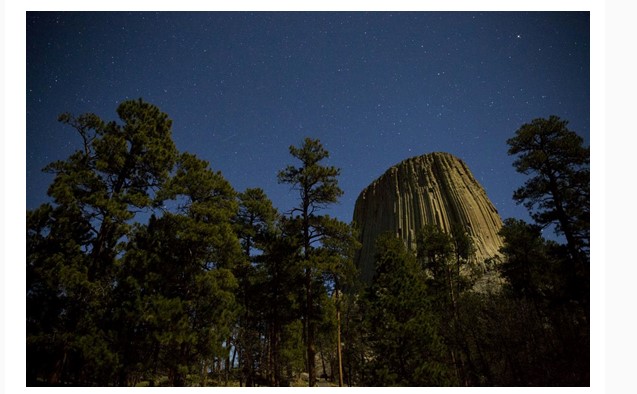
[Photo: Devils Tower2 CREDIT Wyoming Office of Tourism.jpeg]
The Wyoming Frontier Prison Was Perfect Set For 1987 Horror Film
Did you know that Viggo Mortensen filmed a movie in Rawlins, Wyoming, featuring the Wyoming Frontier Prison? The prison, which was occupied from 1901-1981, was never expected to become the perfect filming location only six years after they shut the doors; locals certainly never anticipated one of the most recognizable faces from Hollywood to be the movie’s star, either!
Viggo Mortensen arrived in Rawlins in 1987 to film the now-B-rated horror film “Prison.” To say the city surrounding the famous Wyoming Frontier Prison was excited was an understatement. The film plot centers around Viggo’s character, Burke, as he enters the previously decommissioned prison, now deemed suitable for prisoners due to the overpopulation of the more modern Wyoming State Penitentiary. Soon after Burke’s arrival, strange and scary things begin to happen within the prison walls. Warden Sharpe, played by Lane Smith, is convinced he knows the culprit behind the strange happenings, but how can he stop the ghost of the Wyoming Frontier Prison?
Discover Carbon County Wyoming! Plan to take a guided tour of this 122-year-old prison facility, walk the blocks where “Prison” was filmed and see the lasting effects and staging left behind.
For more information on Carbon County, visit WyomingCarbonCounty.com.
Casper’s Not-So-Hidden Secret: Hell’s Half Acre
Believe it or not, this out-of-this-world landscape is located just a few feet from the highway, yet travelers pass by it every day without knowing! A quick 30-mile drive from Casper, Hell’s Half Acre is well over half an acre, encompassing 960 acres of deep ravines, caves, rock formations and hard-packed eroded earth. Native American tribes used the ravines during their hunts, driving thousands of bison over the cliffs.
Fun fact: Hell’s Half Acre was a filming location for the fictional planet of Klendathu in the movie “Starship Troopers” in 1997!
For more information on Casper, visit VisitCasper.com.
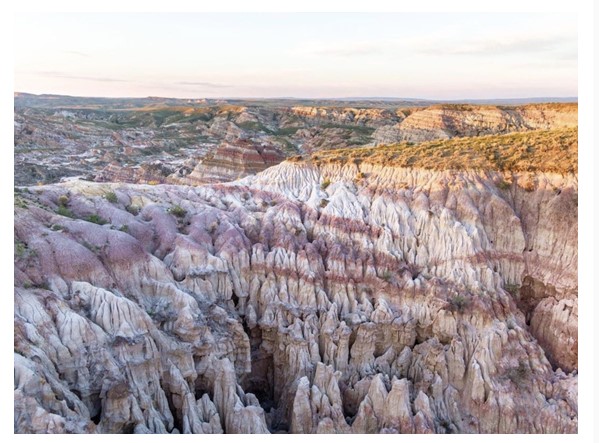
[Photo: Hells Half Acre CREDIT Visit Casper.png]
Cheyenne & CFD Big Topics in Country Western Music
When it comes to who made what famous, one could say Cheyenne, Wyoming, was made famous by the many songwriters who put the capital of Equality State in their songs. On the flip side, one could argue some of those songs were famous because of Cheyenne’s pre-existing fame, especially pertaining to rodeo.
For starters, two of the most beloved country artists of all time, Garth Brooks and George Strait, had hit country songs within a year of one another – “The Beaches of Cheyenne” by Brooks and “I Can Still Make Cheyenne” by Straight were both Top 5 hits in 1995-96. Both refer to rodeo in Cheyenne, most likely Cheyenne Frontier Days.
Wyoming country music legend Chris LeDoux released two hit songs, “Photo Finish” (1973) and “It Ain’t The Years, It’s the Miles,” (1983) that mention both Cheyenne and the rodeo there (most definitely CFD). Several other artists, from Eric Church to Aaron Watson, have given shoutouts to Cheyenne, with most of them referring to the legendary rodeo, or at least its Western roots.
For more information on Cheyenne, visit Cheyenne.org.
“Liver Eating” Mountain Man Interred In Cody, Wyoming
Cody, Wyoming, certainly has its share of colorful characters, but only one of them was known as “Liver Eating.” John Jeremiah Johnston was a real person and not just a character portrayed by Robert Redford in a 1972 movie. The real Jeremiah Johnston was a mountain man who was born in 1824 in New Jersey, fought in the Mexican American War, married a member of the Flathead tribe, and embarked on a 25-year vendetta after his wife was killed by a young Crow brave.
He spent many years in Montana and was a town marshal in Red Lodge.
Johnston died in 1900 at a veterans’ home in Santa Monica, California, and was buried at a Los Angeles veterans’ cemetery. When a freeway was planned to go through that graveyard, some 25 seventh-grade students and their teacher embarked on a campaign to find a suitable location for Johnston’s final resting place. In 1974, he was reinterred at Cody’s Old Trail Town/Museum of the Old West. Among the pall bearers was Robert Redford.
Johnston’s epitaph reads “No More Trails.”
For more information on Cody Yellowstone, visit www.CodyYellowstone.org.
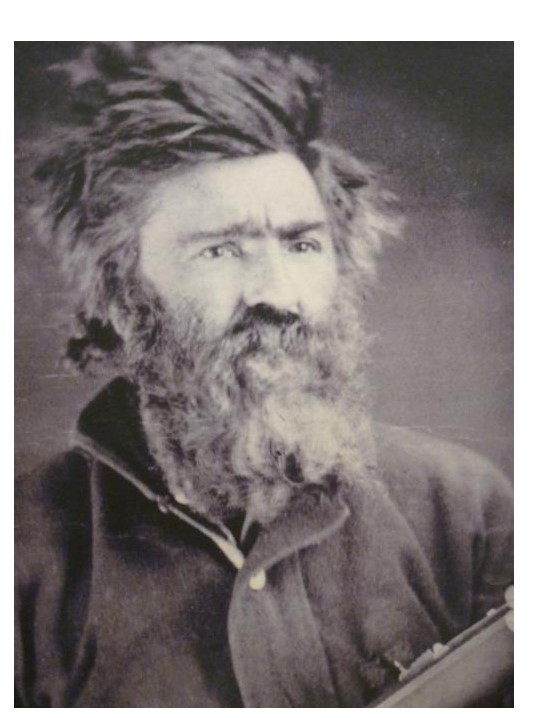
[Photo: Jeremiah Johnston CREDIT Cody Yellowstone.jpg]
DENVER: Famous For Its Food, Beer Scene
Denver is one of the best cities for beer lovers, with more breweries than any other U.S. city and the second-highest number of breweries per capita!
With so much emphasis on foodie culture, it’s no surprise that Denver also hosts some of the best food and drink festivals in the West, including the annual Great American Beer Festival and the Denver Food and Wine Festival. Get a taste of our local flavors by exploring our Denver Beer Trail Denver and the many brewery tours!
Additionally, with numerous food and beverage awards to its name (including a few from the uber-prestigious James Beard Foundation), Denver has quickly become a dining destination for foodies. You’ll find plenty of fine dining options at nationally ranked and recognized eateries, along with international cuisine from around the globe and local favorites like green chile at restaurants and diners across The Mile High City.
Denver is a metropolis of ever-evolving tastes, its forward-thinking dining landscape filled with restaurants from gifted chefs whose culinary magnetism, passion and fortitude fulfill our city’s lust for great food.
For more information on the Official Gateway City of Denver, visit VisitDenver.com.



